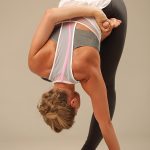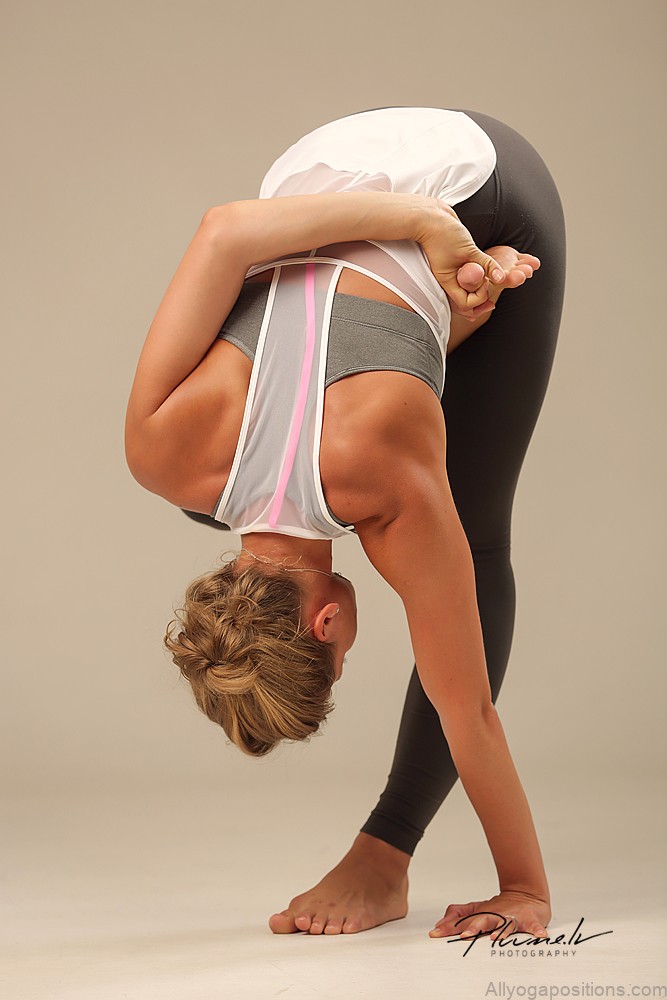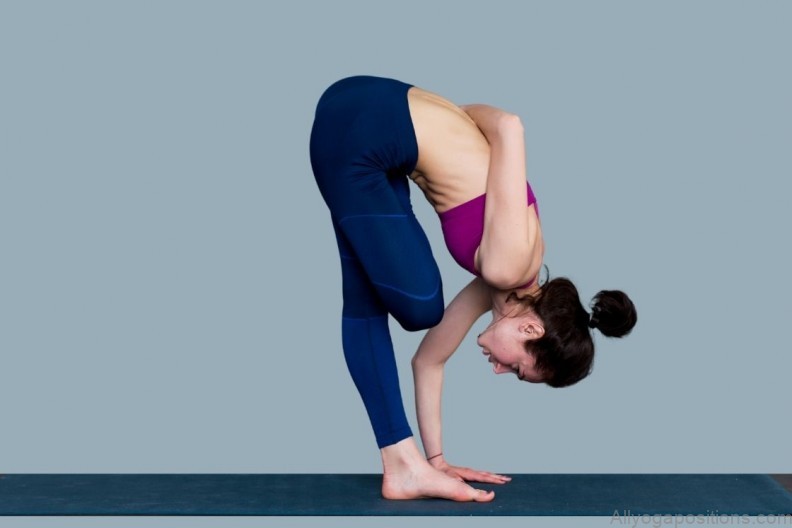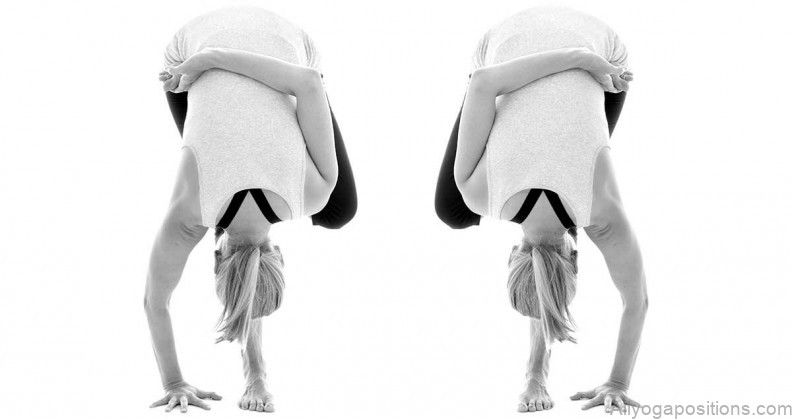Understanding Ardha Baddha Padmottanasana: Half Bound Lotus Forward Bend
In the vast realm of yoga, Ardha Baddha Padmottanasana, also known as Half Bound Lotus Forward Bend, holds a prominent place. Derived from the Sanskrit words “Ardha” meaning “half,” “Baddha” meaning “bound,” “Padma” meaning “lotus,” and “Uttana” meaning “intense stretch,” this pose combines elements of balance, flexibility, and concentration.
Ardha Baddha Padmottanasana is an intermediate level asana that seamlessly blends the gracefulness of the lotus pose (Padmasana) with the deep forward fold of Uttanasana. By uniting these two elements, this posture creates a harmonious balance between stability and expansion.
Unlocking the Benefits of Ardha Baddha Padmottanasana: A Guide to Half Bound Lotus Forward Bend Photo Gallery
Step-by-Step Guide to Performing Ardha Baddha Padmottanasana
To perform Ardha Baddha Padmottanasana, follow these step-by-step instructions:
- Begin in Tadasana (Mountain Pose), with your feet hip-width apart and your spine tall.
- Shift your weight onto your right foot and bring your left foot up, placing the sole of the foot against your right inner thigh.
- Adjust your left foot so that it rests as close to your pubic bone as possible, finding a comfortable position.
- Inhale deeply, elongating your spine, and on the exhale, gently hinge forward at the hips, keeping your spine straight.
- Extend your right arm forward, reaching toward the ground, while maintaining your balance.
- Bend your left elbow and reach behind your back to catch hold of your left foot or ankle.
- Once you have found your balance and stability, slowly fold deeper into the pose by bringing your torso closer to your right leg.
- Maintain a steady breath and hold the pose for 30 seconds to 1 minute.
- To release, gently release your left foot and return to Tadasana. Repeat on the other side.
Physical and Mental Benefits of Ardha Baddha Padmottanasana
- Improves Flexibility: Ardha Baddha Padmottanasana stretches the hips, hamstrings, and groin, enhancing overall lower body flexibility.
- Strengthens the Core: This pose engages the core muscles, including the abdominal and back muscles, thereby improving core strength and stability.
- Enhances Balance: The combination of balancing on one leg and holding the foot or ankle promotes better balance and proprioception.
- Relieves Stress and Anxiety: The deep forward fold of this pose helps calm the mind, reduce stress, and alleviate anxiety.
- Stimulates Digestion: Ardha Baddha Padmottanasana massages the abdominal organs, aiding in digestion and improving gut health.
Modifications and Variations to Enhance Your Practice
Here are a few modifications and variations to explore and deepen your experience of Ardha
Baddha Padmottanasana:
- Supported Ardha Baddha Padmottanasana: If you have difficulty reaching your foot or ankle, use a yoga block or bolster under your hands. This provides additional support and allows you to focus on the forward fold without compromising your balance.
- Half Lotus Variation: If the full lotus position is challenging for you, you can modify by bringing your left foot to rest on your right calf instead of the thigh. This variation still provides a deep stretch while accommodating limited hip flexibility.
- Bound Half Lotus Twist: Once you have mastered the basic pose, you can add a twist to further engage the core and increase spinal mobility. After binding your foot or ankle, exhale and rotate your torso to the right, bringing your left arm across your body and resting it on the outside of your right thigh. Keep the spine long and hold the twist for a few breaths before repeating on the other side.
- Dynamic Ardha Baddha Padmottanasana: For a more dynamic variation, you can incorporate movement into the pose. Instead of holding the forward fold, inhale as you rise back up to standing, and exhale as you fold forward again. Repeat this flow for several rounds, synchronizing your breath with the movement.
- Advanced Full Expression: If you have a high level of flexibility and balance, you can strive for the full expression of Ardha Baddha Padmottanasana. In this variation, you bind your foot or ankle while in full Lotus Pose, with both legs crossed and feet resting on opposite thighs. This advanced variation requires a strong foundation and steady practice.
Precautions and Contraindications for Ardha Baddha Padmottanasana
While Ardha Baddha Padmottanasana offers numerous benefits, it’s important to practice with awareness and consideration for your body’s limitations. Take note of the following precautions and contraindications:
- Knee or Hip Injuries: Avoid this pose if you have any existing knee or hip injuries. Listen to your body and modify the pose accordingly to avoid strain or discomfort.
- Lower Back Issues: If you have lower back pain or disc issues, proceed with caution and consult a qualified yoga instructor or healthcare professional for guidance on modifications or alternatives.
- High Blood Pressure: If you have high blood pressure, keep the head and neck in a neutral position during the forward fold. Avoid any excessive strain or compression in the upper body.
- Pregnancy: Pregnant individuals should exercise caution and consult with their healthcare provider before attempting Ardha Baddha Padmottanasana. Modifications may be necessary to accommodate the changing body and ensure the safety of both mother and baby.
- Balance Issues: If you struggle with balance, practice this pose near a wall or with the assistance of a chair for added stability. Focus on finding your center of gravity and engage your core for better balance.
Remember, it’s essential to warm up the body before attempting any yoga pose and to listen to your body’s signals during the practice. If you experience any pain, discomfort, or dizziness, release the pose and seek guidance from a qualified yoga instructor or healthcare professional.
In conclusion, Ardha Baddha Padmottanasana, the Half Bound Lotus Forward Bend, offers a beautiful fusion of balance, flexibility, and concentration. Through regular practice, you can unlock its physical benefits, such as improved flexibility, core strength, and balance, while nurturing mental well-being and promoting a sense of inner calm. As with any yoga pose, approach it mindfully, respecting your body’s limitations, and exploring modifications and variations that suit your individual needs.
Table of Contents










